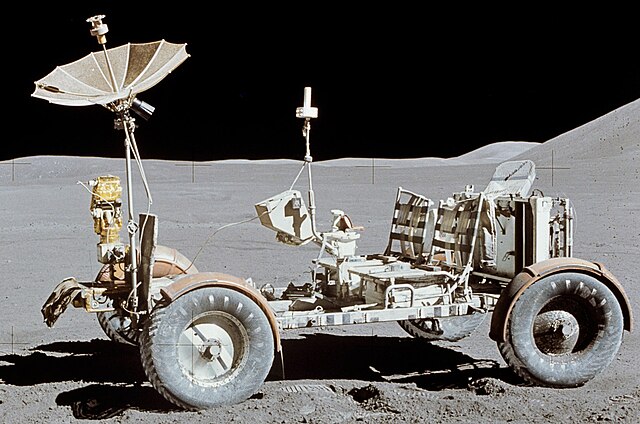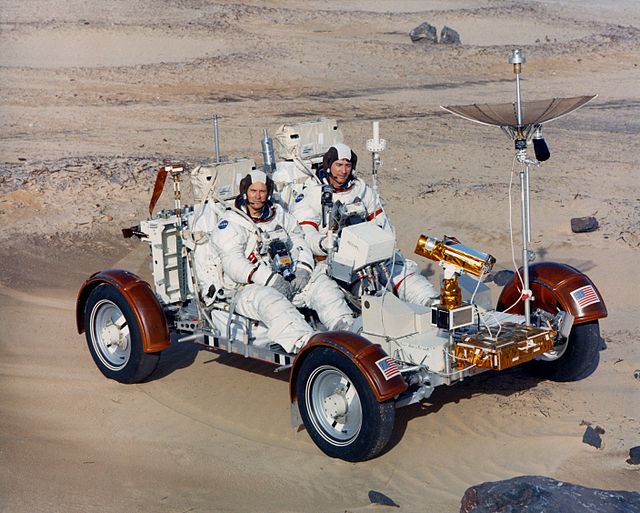Apollo 16 was the tenth crewed mission in the United States Apollo space program, administered by NASA, and the fifth and penultimate to land on the Moon. It was the second of Apollo's "J missions", with an extended stay on the lunar surface, a focus on science, and the use of the Lunar Roving Vehicle (LRV). The landing and exploration were in the Descartes Highlands, a site chosen because some scientists expected it to be an area formed by volcanic action, though this proved not to be the case.
John Young saluting the United States flag while jumping up on the Moon, with the Apollo Lunar Module Orion and Lunar Roving Vehicle in the background
Left to right: Mattingly, Young, DukeApollo program← Apollo 15Apollo 17 →
Apollo 16 space-flown silver Robbins medallion
John Young and Charles Duke training at the Rio Grande Gorge in New Mexico
The Lunar Roving Vehicle (LRV) is a battery-powered four-wheeled rover used on the Moon in the last three missions of the American Apollo program during 1971 and 1972. It is popularly called the Moon buggy, a play on the term "dune buggy".
The U.S. Apollo Lunar Roving Vehicle from Apollo 15 on the Moon in 1971
MOLAB, NASA Illustration, 1960
Apollo 16 astronauts in the 1-g trainer
Apollo 15 – Commander David Scott drives the Rover near the LM Falcon








